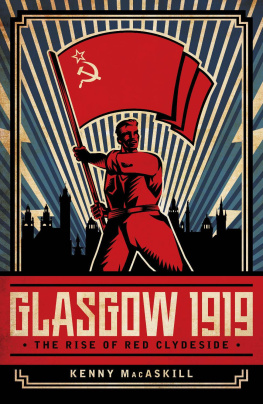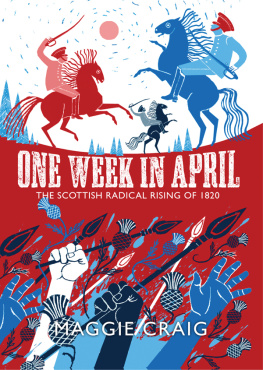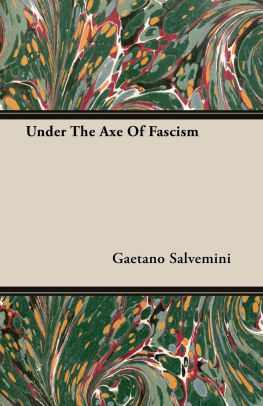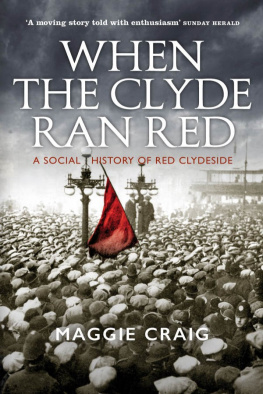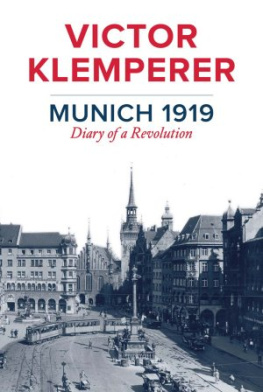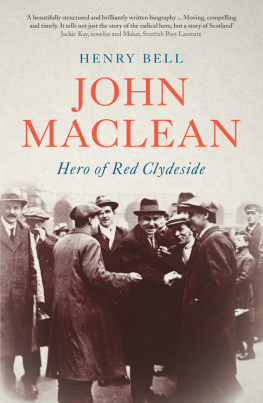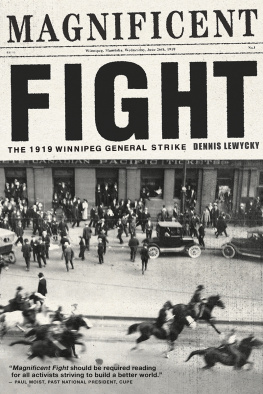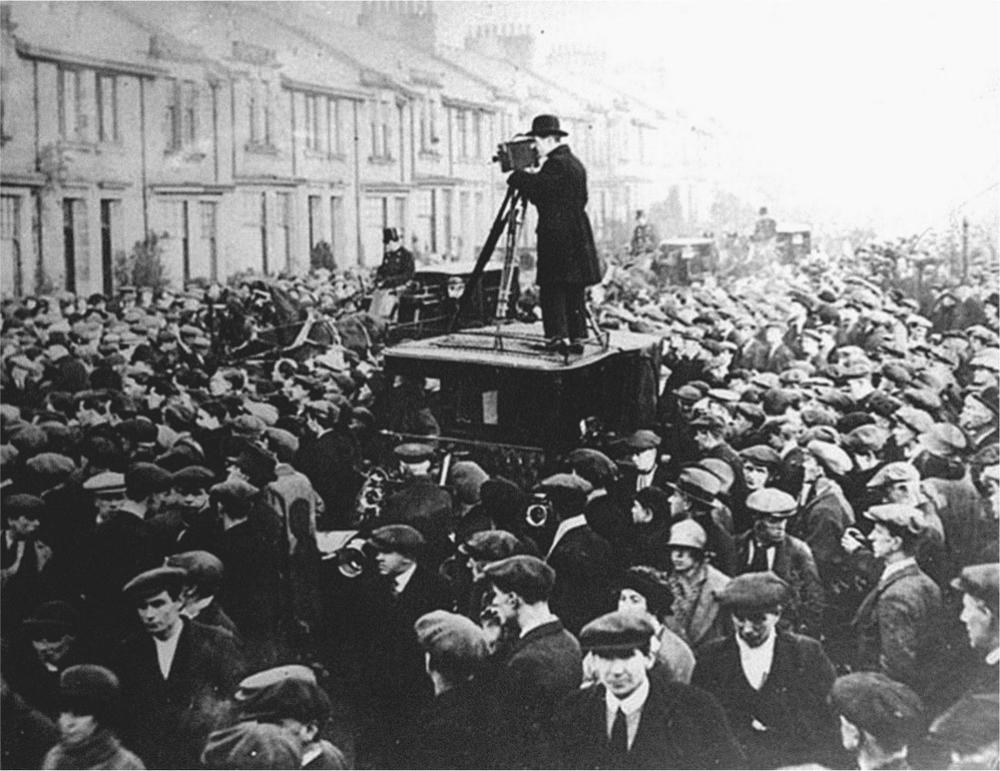F riday 31 January 1919 saw a cold winters day dawn in Glasgow, the second city of a British Empire then so vast it was claimed that the sun could never set on it. But there would be little sunshine that morning, with daylight hours few and industrial pollution dimming natural light; it was an inauspicious start for what was to be a momentous day. Tensions were rising in the city as a strike for a forty-hour week was ongoing, and the fears and concerns of the authorities were mounting as the anger of protestors was rising.
Glasgow was then a teeming metropolis numbering well over a million people, which had expanded initially with the trade of tobacco, cotton and slavery and then with shipbuilding and engineering. It had also become the major city in the empire for munitions and military supplies and a vital part of the martial efforts for the Great War that had just ended.
Despite its growth, Glasgow was at that time a city where deprivation was rampant and where society was far from equal. Many lived in abject poverty whilst huge wealth had been accumulated by a few. Inequality abounded and was exacerbated, rather than reduced, when the First World War broke out. Whilst a few got rich profiting on the military contracts, many more continued to live in desperate circumstances. Hunger was common and infant mortality endemic, rickets blighted lives, and tuberculosis claimed them.
Huge sacrifices had been made by the city with thousands of lives lost waging war in the trenches and elsewhere. Meanwhile, on the home front, other battles had been fought by workers and women against exploitation, poor housing conditions and even by some against the war itself. Although the city (as with the entire country) had caught war fever in 1914, it retained a significant minority who publicly opposed it, probably greater than anywhere else, for whom there was still some respect and sympathy, even if not universal support.
For them the enemy wasnt the Germans, but industrialists, landlords and even the British government. Anti-war agitation had continued, and factory disputes and rent strikes had marked the war years at home, as shell craters had potted the battlefields in Flanders. It was also a city with a long radical tradition, which had seen a cadre of socialist and even revolutionary activists forged in its factories and communities, long before the Great War even broke out. Agitation for radical change had been strengthened, not subdued, by the conflict, and revolution in Russia and rebellion in Ireland had been celebrated by many and seen as the template to follow by some.
Industrial disputes during the war caused such concern that government ministers, including Labour members of the wartime coalition government, and trade union leaders had made appeals to support the war effort. But to little avail, as disturbances continued unabated and industrial peace was only restored through the arrest of leading activists and the deportation of shop stewards, using draconian wartime powers.
Now with peace declared the political agitators had been released, the militant shop stewards had returned, and were back in charge of the sites from which they had been forcibly removed. The Clyde Workers Committee (CWC) that the shop stewards had established to coordinate activities had been resurrected, and the mood was militant. Battle lines were being drawn.
So concerned were the authorities about the threat and the potential effect upon the city that the War Cabinet in London had been closely monitoring events. The spectre of rebellion and revolution that had broken out elsewhere across Europe haunted them, and they were aware of the strength of support that existed for similar actions in the city. They were also concerned by the ability of the shop stewards to coordinate industrial action and to mobilise political support as had previously been shown when it had even threatened the war effort at one stage. As the situation escalated, consideration was even given to detaining strike leaders, and further legal advice was sought. In the interim, following briefings from senior military figures, the army was placed on standby.
The number of strikers was rising and the demands for action by both those who backed the dispute and those who opposed it were increasing. Factories and shipyards were shutting and large demonstrations had been taking place in support of the closures, with the red flag not only sung by protestors but also waved by marchers. Local political and industrial leaders were worried about the power supply, and demands had been made by the strike leaders to have the city trams stop running.
Crowds had been gathering daily in George Square and police from across the city were mobilised to confront them. Constables were deployed in front of the City Chambers that morning, with more including mounted officers in reserve. Confrontation was looming. Demonstrators were already standing in the central square and spilling into surrounding streets, as ever more were arriving by the minute. Nerves were on edge and the mood was tense. Fear was evident amongst the police, as was frustration for the strikers.
Then, through the growing tumult, a tramcar quietly turned into George Square. It was just one of many seeking to work its way through the milling crowds. But suddenly, a striker on board the trolley pulled the cord disconnecting the cable that powered it. Why he did so or even who he was is not known. It may have been frustration at the trams still running or just a desire to alight at that spot. But, stop it did, and that led to a fight in the tramcar between him and an off-duty soldier also seated there. The punch-up that followed between them quickly spilled out onto the street where others became embroiled. This was what sparked the riot and the events that became known as Bloody Friday, the Battle of George Square.
What had begun as a fight between a striker and an off-duty soldier quickly became a full-blown battle between protestors and police, and soon spread to other parts of the city. Baton-wielding officers and strikers charged and counter-charged. Heads were broken and officers were chased by angry demonstrators. Lorries were commandeered and used as barricades. Bottles and paving stones were flung, with windows broken and shops looted. Some were arrested and many taken to hospital from both sides. The Riot Act was read, or at least attempts were made to do so, but the unrest continued regardless, as police and civic leaders were overwhelmed by the situation. Trouble continued through the night, as gangs of men roamed the streets and incidents of looting took place.
The local powers in Glasgow sought support from the government in London, which was immediately provided (having already been prepared for), and the reaction was to be both swift and hard. That evening troops started arriving in Glasgow from barracks around Scotland, with tanks despatched from England arriving soon after. They were quickly deployed in George Square and at other key locations across the city, including the power stations. Pinkston Power Station, which supplied the electricity for the city tramways, was a particular concern, and was speedily guarded by armed soldiers.

